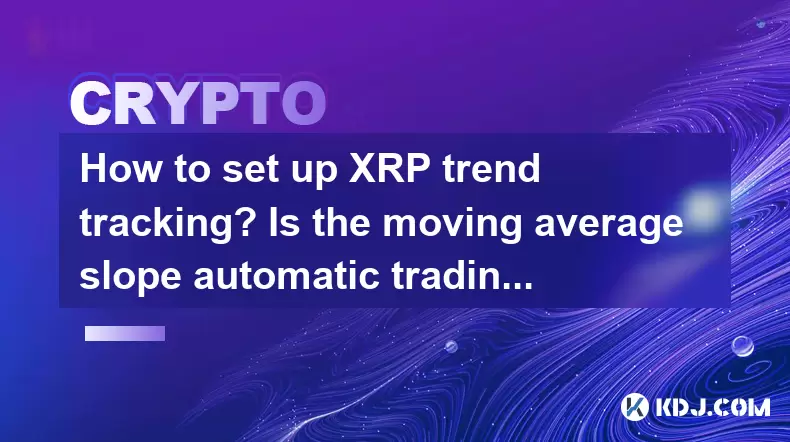-
 Bitcoin
Bitcoin $119000
-2.21% -
 Ethereum
Ethereum $4315
1.01% -
 XRP
XRP $3.151
-3.11% -
 Tether USDt
Tether USDt $0.0000
0.00% -
 BNB
BNB $808.5
-0.71% -
 Solana
Solana $175.8
-4.21% -
 USDC
USDC $0.9999
0.00% -
 Dogecoin
Dogecoin $0.2250
-3.92% -
 TRON
TRON $0.3469
1.77% -
 Cardano
Cardano $0.7818
-3.81% -
 Chainlink
Chainlink $21.47
-2.10% -
 Hyperliquid
Hyperliquid $43.30
-6.81% -
 Stellar
Stellar $0.4370
-2.84% -
 Sui
Sui $3.682
-4.40% -
 Bitcoin Cash
Bitcoin Cash $590.8
2.67% -
 Hedera
Hedera $0.2484
-5.20% -
 Ethena USDe
Ethena USDe $1.001
0.00% -
 Avalanche
Avalanche $23.10
-4.29% -
 Litecoin
Litecoin $119.2
-3.96% -
 Toncoin
Toncoin $3.409
0.90% -
 UNUS SED LEO
UNUS SED LEO $9.016
-1.29% -
 Shiba Inu
Shiba Inu $0.00001304
-3.82% -
 Uniswap
Uniswap $11.18
1.33% -
 Polkadot
Polkadot $3.913
-3.51% -
 Cronos
Cronos $0.1672
-3.08% -
 Dai
Dai $1.000
0.02% -
 Ethena
Ethena $0.7899
-4.70% -
 Bitget Token
Bitget Token $4.400
-1.23% -
 Pepe
Pepe $0.00001132
-5.93% -
 Monero
Monero $257.9
-6.44%
How to set up XRP trend tracking? Is the moving average slope automatic trading effective?
Set up XRP trend tracking using moving averages on platforms like Binance; use the slope for automatic trading, but monitor and adjust regularly for optimal performance.
May 20, 2025 at 01:35 am

Introduction to XRP Trend Tracking
Setting up XRP trend tracking involves monitoring the price movements and market trends of XRP, a popular cryptocurrency. By understanding these trends, traders can make informed decisions about when to buy or sell XRP. Trend tracking can be done through various technical analysis tools, including moving averages, which are essential for identifying the direction of the market. In this article, we will explore how to set up XRP trend tracking and discuss the effectiveness of using the moving average slope for automatic trading.
Setting Up XRP Trend Tracking
To set up XRP trend tracking, you will need to use a reliable cryptocurrency trading platform that offers charting and analysis tools. Here are the steps to follow:
- Choose a Trading Platform: Select a platform that supports XRP trading and provides advanced charting tools. Popular options include Binance, Coinbase Pro, and Kraken.
- Access the Charting Tool: Once logged into your chosen platform, navigate to the XRP trading pair you are interested in (e.g., XRP/USDT) and access the charting tool.
- Add Moving Averages: To track trends, add moving averages to your chart. Common moving averages used in trend tracking include the 50-day, 100-day, and 200-day moving averages. You can add these by selecting the 'Indicators' or 'Studies' option on your charting tool and choosing the moving average indicator.
- Configure Moving Averages: Set the parameters for each moving average. For example, set one moving average to a 50-day period, another to a 100-day period, and a third to a 200-day period. These settings will help you identify short-term, medium-term, and long-term trends.
- Analyze the Trends: Observe how the price of XRP interacts with the moving averages. When the price is above the moving averages, it indicates an uptrend, and when it is below, it suggests a downtrend. Crossovers between the moving averages can also signal potential trend changes.
Understanding the Moving Average Slope
The moving average slope is a derivative of the moving average that measures the rate of change of the moving average over time. It is used to identify the strength and direction of a trend. A positive slope indicates an upward trend, while a negative slope suggests a downward trend. The steeper the slope, the stronger the trend.
To calculate the moving average slope, you can use the following formula:
[ \text{Slope} = \frac{\text{MA}{\text{current}} - \text{MA}{\text{previous}}}{\text{Time period}} ]
Where (\text{MA}{\text{current}}) is the current moving average value, (\text{MA}{\text{previous}}) is the previous moving average value, and the time period is the interval between the two values.
Setting Up Automatic Trading Based on Moving Average Slope
Automatic trading based on the moving average slope involves setting up trading algorithms that execute buy or sell orders based on the slope's value. Here's how to set it up:
- Choose an Automated Trading Platform: Select a platform that supports automated trading, such as TradingView or MetaTrader 4, which can be integrated with your chosen cryptocurrency exchange.
- Create a Trading Algorithm: Develop a trading algorithm that uses the moving average slope as a trigger for buying or selling. For example, you might set the algorithm to buy XRP when the 50-day moving average slope turns positive and sell when it turns negative.
- Backtest the Algorithm: Before deploying the algorithm live, backtest it using historical data to ensure its effectiveness. This step helps you understand how the algorithm would have performed in the past.
- Deploy the Algorithm: Once satisfied with the backtesting results, deploy the algorithm on your trading platform. Ensure that you set appropriate risk management parameters, such as stop-loss and take-profit levels, to protect your investment.
Effectiveness of Moving Average Slope Automatic Trading
The effectiveness of using the moving average slope for automatic trading can vary depending on several factors, including market conditions, the specific parameters of the algorithm, and the trader's risk tolerance. Here are some points to consider:
- Market Volatility: In highly volatile markets, the moving average slope may generate more false signals, leading to potential losses. Conversely, in stable markets, the slope can be a reliable indicator of trend direction.
- Parameter Sensitivity: The effectiveness of the algorithm can be highly sensitive to the parameters chosen for the moving average and the slope calculation. Fine-tuning these parameters through backtesting is crucial for optimizing performance.
- Risk Management: Effective risk management is essential when using automatic trading strategies. Setting appropriate stop-loss and take-profit levels can help mitigate potential losses and protect profits.
- Historical Performance: While past performance is not indicative of future results, analyzing the historical performance of the moving average slope strategy can provide insights into its potential effectiveness.
Monitoring and Adjusting Your Strategy
Once your automatic trading strategy based on the moving average slope is live, it is important to continuously monitor and adjust it as needed. Here are some tips for effective monitoring:
- Regularly Review Performance: Check the performance of your trading algorithm regularly to ensure it is meeting your expectations. Look for any patterns or anomalies that may require adjustments.
- Adjust Parameters: Based on your performance review, you may need to adjust the parameters of your moving average and slope calculations. This could involve changing the time periods of the moving averages or the thresholds for buying and selling.
- Stay Informed: Keep up-to-date with market news and developments that could impact XRP's price. This information can help you make informed decisions about when to adjust your trading strategy.
- Use Additional Indicators: Consider incorporating additional technical indicators, such as the Relative Strength Index (RSI) or the Moving Average Convergence Divergence (MACD), to complement the moving average slope and enhance your trading strategy.
Frequently Asked Questions
Q: Can I use the moving average slope strategy for other cryptocurrencies besides XRP?
A: Yes, the moving average slope strategy can be applied to other cryptocurrencies. However, you may need to adjust the parameters and time periods based on the specific volatility and market conditions of the cryptocurrency you are trading.
Q: How often should I backtest my trading algorithm?
A: It is recommended to backtest your trading algorithm periodically, especially when you make changes to the parameters or when market conditions change significantly. A good practice is to backtest at least once a month or after any major market event.
Q: What are the risks associated with automatic trading based on the moving average slope?
A: The main risks include false signals leading to losses, over-optimization of the algorithm, and technical issues with the trading platform. It is important to implement robust risk management strategies and continuously monitor the performance of your algorithm to mitigate these risks.
Q: Can I combine the moving average slope with other trading strategies?
A: Yes, combining the moving average slope with other trading strategies can enhance your overall trading approach. For example, you could use the slope as a trend-following indicator and combine it with mean reversion strategies or momentum indicators to create a more robust trading system.
Disclaimer:info@kdj.com
The information provided is not trading advice. kdj.com does not assume any responsibility for any investments made based on the information provided in this article. Cryptocurrencies are highly volatile and it is highly recommended that you invest with caution after thorough research!
If you believe that the content used on this website infringes your copyright, please contact us immediately (info@kdj.com) and we will delete it promptly.
- Japan, Bitcoin, and Treasuries: A New Era of Corporate Finance?
- 2025-08-12 18:30:12
- Bitcoin Bull Market: Decoding the Indicators for the Next Big Move
- 2025-08-12 18:30:12
- Do Kwon's Terra Collapse: From 'Not Guilty' to Guilty Plea?
- 2025-08-12 18:50:12
- Material Efficiency, Traceability, and Trust: The New Pillars of Sustainability
- 2025-08-12 18:50:12
- PumpFun (PUMP) Price: Riding the Meme Coin Wave or Facing a Wipeout?
- 2025-08-12 16:50:12
- Uniswap's Legal Clarity Fuels Price Target: Will UNI Hit $12.85?
- 2025-08-12 17:30:13
Related knowledge

How to purchase Aragon (ANT)?
Aug 09,2025 at 11:56pm
Understanding Aragon (ANT) and Its PurposeAragon (ANT) is a decentralized governance token that powers the Aragon Network, a platform built on the Eth...

Where to trade Band Protocol (BAND)?
Aug 10,2025 at 11:36pm
Understanding the Role of Private Keys in Cryptocurrency WalletsIn the world of cryptocurrency, a private key is one of the most critical components o...

What is the most secure way to buy Ocean Protocol (OCEAN)?
Aug 10,2025 at 01:01pm
Understanding Ocean Protocol (OCEAN) and Its EcosystemOcean Protocol (OCEAN) is a decentralized data exchange platform built on blockchain technology,...

How to invest in Kyber Network Crystal v2 (KNC)?
Aug 12,2025 at 05:21pm
Understanding Kyber Network Crystal v2 (KNC)Kyber Network is a decentralized liquidity hub built on the Ethereum blockchain that enables instant token...

Where can I buy UMA (UMA)?
Aug 07,2025 at 06:42pm
Understanding UMA and Its Role in Decentralized FinanceUMA (Universal Market Access) is an Ethereum-based decentralized finance (DeFi) protocol design...

What exchanges offer Gnosis (GNO)?
Aug 12,2025 at 12:42pm
Overview of Gnosis (GNO) and Its Role in the Crypto EcosystemGnosis (GNO) is a decentralized prediction market platform built on the Ethereum blockcha...

How to purchase Aragon (ANT)?
Aug 09,2025 at 11:56pm
Understanding Aragon (ANT) and Its PurposeAragon (ANT) is a decentralized governance token that powers the Aragon Network, a platform built on the Eth...

Where to trade Band Protocol (BAND)?
Aug 10,2025 at 11:36pm
Understanding the Role of Private Keys in Cryptocurrency WalletsIn the world of cryptocurrency, a private key is one of the most critical components o...

What is the most secure way to buy Ocean Protocol (OCEAN)?
Aug 10,2025 at 01:01pm
Understanding Ocean Protocol (OCEAN) and Its EcosystemOcean Protocol (OCEAN) is a decentralized data exchange platform built on blockchain technology,...

How to invest in Kyber Network Crystal v2 (KNC)?
Aug 12,2025 at 05:21pm
Understanding Kyber Network Crystal v2 (KNC)Kyber Network is a decentralized liquidity hub built on the Ethereum blockchain that enables instant token...

Where can I buy UMA (UMA)?
Aug 07,2025 at 06:42pm
Understanding UMA and Its Role in Decentralized FinanceUMA (Universal Market Access) is an Ethereum-based decentralized finance (DeFi) protocol design...

What exchanges offer Gnosis (GNO)?
Aug 12,2025 at 12:42pm
Overview of Gnosis (GNO) and Its Role in the Crypto EcosystemGnosis (GNO) is a decentralized prediction market platform built on the Ethereum blockcha...
See all articles

























































































